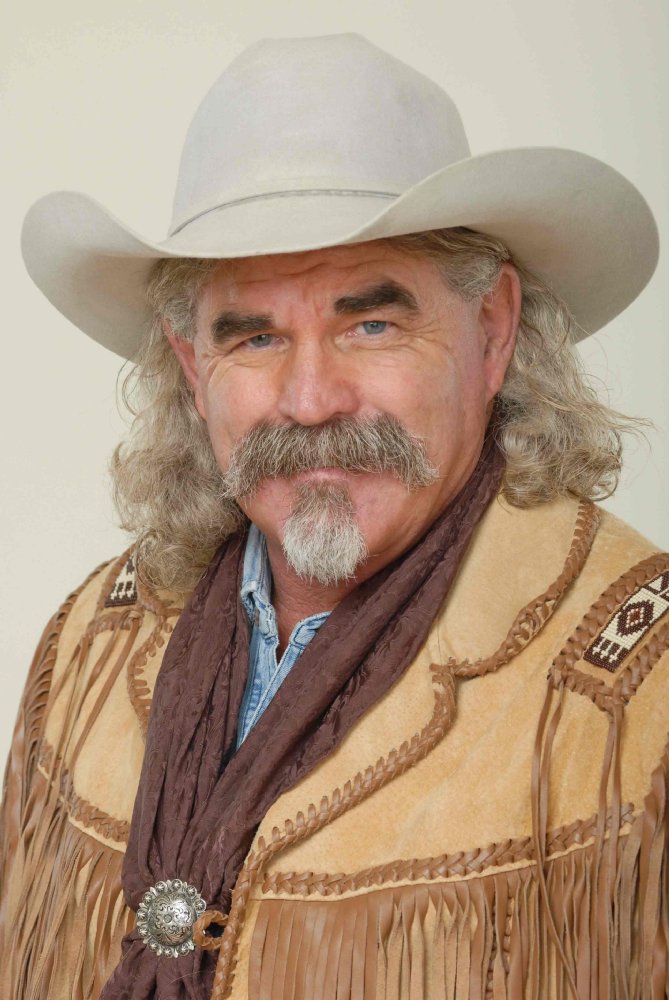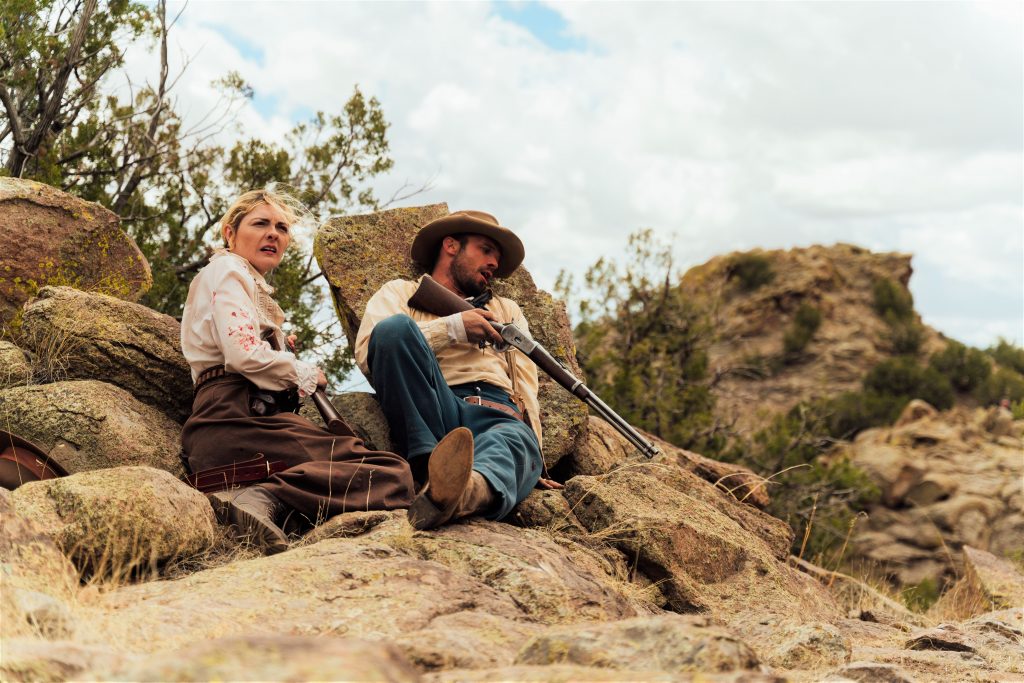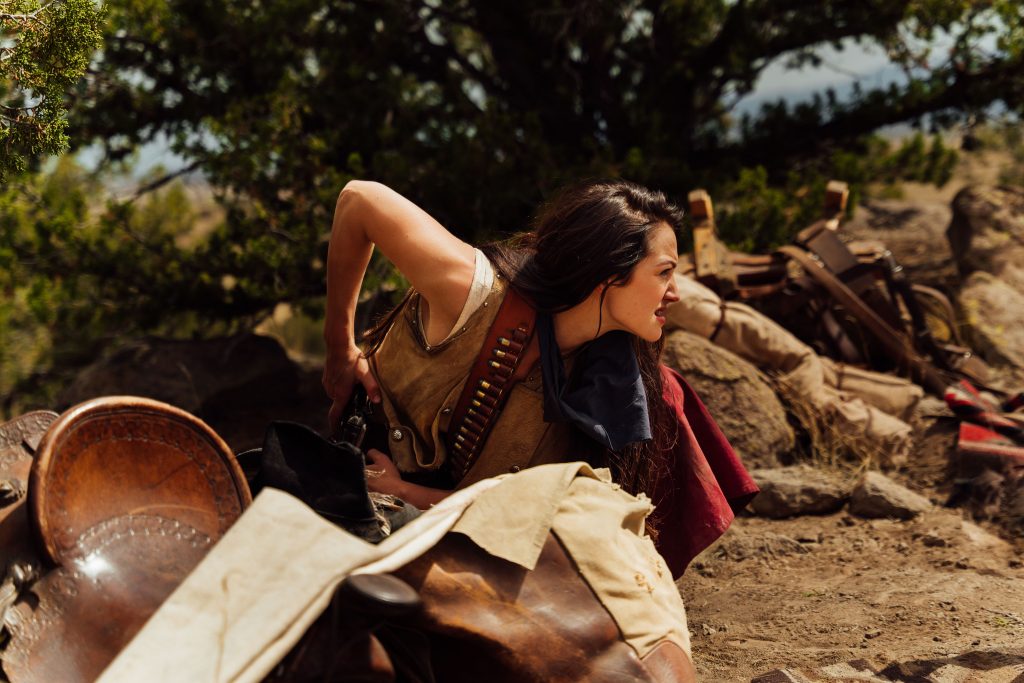Rodeo champ turned filmmaker Raliegh Wilson talks about his new Western, Two Sinners and a Mule, opening this weekend.
For decades on the international rodeo circuit, Raliegh Wilson rode tall as an award-winning champion before retiring from competition in 1995. And if that wasn’t enough to establish his cowboy bona fides, consider: During this period, he appeared as a Marlboro Man in print advertising. No kidding.
More recently, Wilson has made his mark in the film industry as an actor and stunt coordinator, with credits that include Titanic, The Thin Red Line, The Mummy, The War of the Worlds and Troy. In early 2002, he opened Rollywood Studios, a 4,000 square foot green-screen facility and production facility in Simi Valley, California.
But what he’s really wanted to do is direct.
And he’s finally made that dream come true with Two Sinners and a Mule, a new Western opening this weekend in digital, On Demand, and limited theatrical release.
What’s it all about? According to the official Lionsgate synopsis: “Kicked out of a small Western town for sinful behavior, free-spirited Alice (Chantelle Albers) and Nora (Hannah James) set out for Virginia City to pursue their dream of opening a restaurant. Out on the prairie, they come across an injured bounty hunter named Elden (Cam Gigandet, Twilight). Hoping to share in the reward, they nurse Elden back to health and help him stalk his prey, Grimes (Cord Newman). But as Nora and Alice both develop feelings for Elden, no one notices that Grimes is now on their tail, and the hunters become the hunted.”
Here is an exclusive video clip from Two Sinners and a Mule.
We recently had the opportunity to speak with Raliegh Wilson about his debut effort as a feature film director. Here are some highlights from our conversation, edited for clarity and brevity.
Cowboys & Indians: So what’s more difficult, riding a bronc or ramrodding a movie set?
Raliegh Wilson: Oh, man. Ramrodding a movie set. Absolutely.
C&I: How so?
Wilson: Well, when you’re in a rodeo and you’re riding a bucking horse, you only have one thing to concentrate on and that’s that bucking horse. When you’re doing a movie you’ve got actors, you’ve got camera operators, you’ve got sound people, you’ve got extras, you’ve got producers running down your neck. Yeah, definitely. Definitely a little more stressful. I mean, certainly riding a bucking horse was stressful as well. But after as many years as I rode, I was pretty confident every time I got on. So it wasn’t that big a deal.
C&I: Of course, this isn’t your first rodeo as far as movies are concerned. But what was there about this particular project that made you think, “Yeah, it’s time for me to direct.”
Wilson: Well, this movie’s been coming a long time. I’ve been pushing to direct something for some 15 years. And Beau Hilliard, the writer of this project, I actually did a TV interview with Harry Carey Jr., and Beau saw me on that, and he contacted me and sent me some of his scripts. And I read some of the scripts and I said, “Well, we don’t have budget for these types of scripts, but what can we do if we wrote a script with four actors, and it started out about two women of ill repute and their transformation and redemption and helping the good guy catch the bad guy?” And that’s what he came up with.

C&I: In addition to your outstanding lead players, you’ve cast some familiar faces in supporting roles — which should greatly please Western fans. People like Buck Taylor, Luce Taylor and Robert Woods.
Wilson: Basically, I wanted to do that as a tribute to all of the old actors. And I also cast people like David Midthunder, who’s so great as Lobo. And you know what? We shot this movie in 15 days. This movie’s all because of cowboy luck. And cowboy luck isn’t always good luck. In fact, we had a lot of bad luck. The second day of shooting, we lost all of our locations because of fires in New Mexico. And we had a mishap with our bad guy. I said he was taking his bad character a little bit far when the FBI showed up at his motel and hauled him off to jail for a couple of days.
C&I: Was it a case of mistaken identity or…?
Wilson: It was an identity theft that caused some issues, but he came back and finished the movie. So anyway, we ended up moving, and our locations ended up all being in one place, the Bonanza Creek Ranch. And like I said, we made up our days and we shot this thing in 15 days.

C&I: Can you tell us a little bit about the casting of your three leads?
Wilson: They’re pretty amazing. We negotiated with Cam, Hannah, and Chantelle for a long period of time. And when we began to shoot, I had a meeting with all three of them, and I said, “This is a John Wayne movie, but it’s not. This is a Clint Eastwood movie, but it’s not. It’s a Jerry Lewis movie, but it’s not. And it’s a Tarantino movie, but it’s not. So all of those elements are what we need to create through these characters.” My goal was to have the audience almost feel the emotions that the actors are portraying in the film.
And we have a lot of emotions in this thing. We have Hannah, who is happy to be what she is, and then begins to realize that, well, she’s getting old and maybe there is some other way to go. Chantelle, she wants to change her life. She came out here and ended up doing what she’s doing just because it was the only thing else to do. And Eldon was more or less in the same position. All three of these characters ended up being where they were at this point in time, because of incidents that happened in their life. And to tell you the truth, there’s a lot of people in the audience who are going to have the same feelings. They're going to be thinking, “Yeah, choices are not always our own. What happens, happens.”

C&I: What films and filmmakers would you say influenced you while making Two Sinners and a Mule?
Wilson: [Laughs] Well, the original title of this movie was Two Sinners and a Son of a Bitch. But I didn’t feel that was quite kosher.
C&I: Probably not.
Wilson: But really, I’ve had such a great education in the film business because I have worked with many, many great directors. From Steven Spielberg to Terrence Malick, Wolfgang Petersen — all these great directors, I just was like a sponge every time I was near them. Even Tim Burton, when we did the Planet of the Apes movie. I just saw how things were shot, saw how things came together. I shoot in a way that I know how I'm going to edit. So when it came time to edit, I had my director of photography, Bruce Logan, do the editing for me. And shoot, when we sat down, after we had two sessions, and we had the rough cut and the director’s cut all done.
C&I: So you think you’ve gotten the hang of this directing thing?
Wilson: What’s really interesting about this is that when I was rodeoing people would ask me, “Well, how’s it going?” And I’d go, “Well, let me open up the Rodeo Sports News. Well, hey, I guess I’m doing all right.” So now I guess, in the movie business, I can open up a magazine like Cowboys and Indians and go, “Hey, I guess I’m doing all right.”
Check out more updates on Two Sinners and a Mule here.














